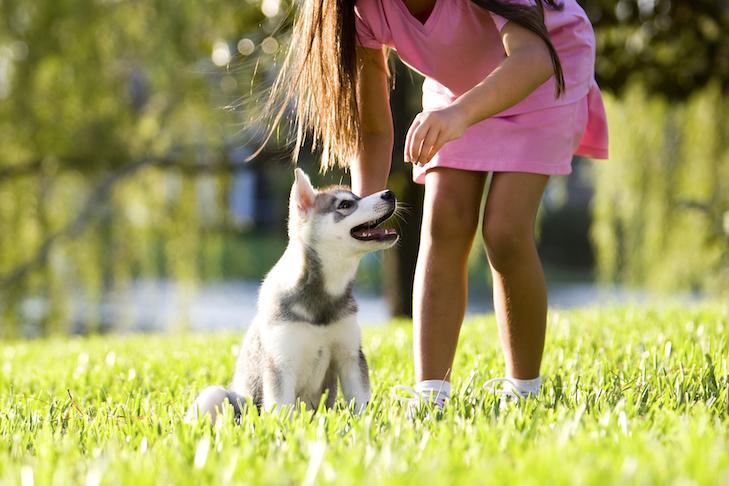Title: Mastering the Night: A Guide to Potty Training Your Puppy After Dark
Welcoming a new puppy into your home is an exciting adventure filled with wagging tails and playful antics. However, as the sun dips below the horizon and the household settles into nighttime routines, a new challenge emerges: potty training your puppy at night. While daytime training often benefits from the energy and attentiveness of daylight hours, the quiet of night introduces a unique set of obstacles. From navigating your pup’s natural instincts to establishing a consistent routine, nighttime potty training requires patience, perseverance, and a touch of creativity. In this article, we will explore effective strategies to help your puppy successfully learn the ropes of nighttime potty training, ensuring sweet dreams for both you and your furry friend. Join us as we shed light on this essential aspect of puppy care that will lead you toward peaceful nights and well-trained days.
Table of Contents
- Understanding Your Puppys Nighttime Needs
- Creating a Comfortable Sleeping Environment
- Establishing a Consistent Pre-Bedtime Routine
- Addressing Accidents with Patience and Praise
- Q&A
- To Conclude
Understanding Your Puppys Nighttime Needs
As your new furry friend settles in, it’s crucial to recognize their distinct nighttime requirements, especially during the potty training phase. Puppies have smaller bladders and are not capable of holding it for extended periods, so nighttime routines become essential. Consider implementing a structured bedtime schedule that allows your puppy to relieve themselves before settling down for the night. This can include:
- Late-night potty break: Take your puppy out just before bed.
- Consistent sleeping area: Designate a comfortable, quiet space for them to sleep.
- Limit water intake: Control their drinking a couple of hours before bedtime to reduce the need to potty at night.
Monitoring signs of discomfort or restlessness can help you anticipate nighttime bathroom needs. Most puppies will signal they need to go out by whining or moving around their sleeping area. Establishing a positive reinforcement system for successful potty breaks can also be beneficial. Implement a table to help track progress:
| Night | Potty Breaks | Puppy’s Behavior |
|---|---|---|
| Night 1 | 2 | Whining after 2 hours |
| Night 2 | 1 | Calm, slept through night |
| Night 3 | 1 | Restless, small accidents |
With patience, consistency, and observation, you can successfully support your puppy’s nighttime needs and make the potty training journey smoother for both of you.
Creating a Comfortable Sleeping Environment
Establishing a cozy atmosphere for your puppy during the night can significantly assist in the potty training process. The environment should be tailored to provide a sense of security and comfort, which can reduce anxiety and foster a restful sleep. Consider the following key elements when designing your puppy’s sleeping area:
- Temperature Control: Ensure the room is at a comfortable temperature, ideally between 68°F to 72°F (20°C to 22°C).
- Quiet Space: Pick a calm area away from household noise and distractions.
- Comfortable Bedding: Use soft bedding that’s easy to wash to encourage a cozy atmosphere.
- Darkness: Keep the space dimly lit to mimic nighttime conditions, helping your puppy understand it’s time to sleep.
Additionally, consider incorporating some simple training aids that reinforce the potty training experience. A crate can provide your puppy with a den-like space conducive to rest while also being an effective tool for overnight training. Here are a few essential items to enhance their sleeping setup:
| Item | Purpose |
|---|---|
| Crate | Offers a secure sleeping space, helps with nighttime potty training. |
| Washable Bedding | Provides comfort and is easy to clean for accidents. |
| Pet Night Light | Gives a soothing glow without being too bright. |
| Soft Toys | Can soothe and comfort your puppy during the night. |
Establishing a Consistent Pre-Bedtime Routine
Creating a reliable routine before bedtime is essential for your puppy’s potty training success. Puppies thrive on consistency, and a well-established sequence of activities can signal to them that it’s time to wind down for the night. A typical routine may include:
- Evening Walks: A final bathroom break and some exercise.
- Quiet Time: Reduce stimulation by dimming the lights and keeping noise levels low.
- Potty Break: Always take your puppy outside immediately before settling down for the night.
- Comfortable Sleeping Area: Ensure the sleeping space is cozy, secure, and appropriately sized.
It’s important to stick to this routine daily, which will help your puppy learn when and where it’s time to potty. Consider using a simple chart to monitor your puppy’s progress and any accidents that may occur during the night. This can help you identify patterns and adjust your routine as needed.
| Activity | Time | Notes |
|---|---|---|
| Evening Walk | 7:00 PM | Keep it short and encouraging. |
| Potty Outside | 7:30 PM | Stay until they go. |
| Quiet Time | 7:45 PM | Calm activities like gentle petting. |
| Bedtime | 8:00 PM | Place in crate or designated area. |
Addressing Accidents with Patience and Praise
Accidents during nighttime potty training can be disheartening, but they are an inevitable part of the learning process. When your puppy has an unfortunate accident, it’s crucial to remain calm and composed. Instead of scolding or expressing frustration, focus on cleaning the area thoroughly to eliminate lingering scents that could encourage your puppy to repeat the behavior. Remember, your little one is still learning, and patience is key. A positive environment will foster confidence and make future successes more likely.
Encouragement is equally essential in your potty training journey. When your puppy successfully goes outside, shower them with praise and rewards. This reinforcement lets them know they’ve done a great job and encourages them to keep it up. Consider creating a simple rewards system to track their progress over time:
| Puppy Progress Rewards | Reward Type |
|---|---|
| First Night Without Accidents | Extra Playtime |
| One Week of Consistent Going Outside | Favorite Treat |
| Two Weeks Without Accidents | New Toy |
Incorporating positive reinforcement into your routine builds your puppy’s confidence and strengthens the bond between you two. Celebrate small victories, be patient through setbacks, and soon enough, those midnight runs outside will turn into peaceful nights of sound sleep.
Q&A
Q&A: Potty Training Your Puppy at Night
Q1: Why is potty training at night important for my puppy?
A: Potty training your puppy at night is crucial because it helps instill good habits early on. Puppies have small bladders and may not be able to hold it for long periods, especially while sleeping. By establishing a nighttime routine, you’re not only preventing accidents but also promoting a sense of security and comfort for your puppy.
Q2: When should I start nighttime potty training?
A: You can start nighttime potty training as soon as you bring your puppy home. Most puppies can begin to learn nighttime routines around 8 to 12 weeks old. Pay attention to their signals; when they wake up or cry, it’s often a sign they need to go out.
Q3: How often should I take my puppy out during the night?
A: Generally, it’s recommended to take your puppy out every 2-4 hours during the night. Young puppies may need to go out more frequently, especially if they have just eaten or drunk water. As they grow and their bladder capacity increases, you can gradually extend the time between bathroom breaks.
Q4: What steps should I follow for successful nighttime potty training?
A:
- Establish a Routine: Create a consistent pre-bedtime routine that includes a bathroom break.
- Limit Water Intake: Consider limiting your puppy’s water intake for a couple of hours before bedtime.
- Choose a Sleeping Spot: Keep your puppy close by in a crate or a small space at night to make it easier to take them out when needed.
- Use Positive Reinforcement: Praise and reward your puppy for going outside at night to reinforce the behavior.
- Watch for Signs: Be attentive to signs that your puppy needs to go (whining, restlessness).
Q5: What if my puppy has accidents at night?
A: It’s normal for accidents to happen during the potty training process. If your puppy has an accident, don’t scold them; instead, clean the area thoroughly to remove any scent that might encourage them to go there again. Assess whether you need to adjust your routine or frequency of bathroom breaks.
Q6: How can I help my puppy feel more comfortable at night?
A: To help your puppy feel secure, provide a cozy sleeping area with a comfortable bed and a few toys. A ticking clock or a warm water bottle can mimic the warmth of their littermates, providing reassurance. Additionally, a soft blanket can help reduce anxiety and encourage better sleep.
Q7: How long does nighttime potty training usually take?
A: The duration of nighttime potty training varies from puppy to puppy, depending on their age, breed, and your training consistency. Generally, it may take a few weeks to a few months for your puppy to become fully potty trained at night. Patience and persistence are key!
Q8: Any final tips for potty training my puppy at night?
A: Consistency is your best friend. Follow your established routine and stay patient, understanding that every puppy learns at their own pace. Celebrate the small victories along the way, and remember that with love, attention, and a bit of perseverance, you’ll help your furry friend master nighttime potty training in no time!
—
Happy training!
To Conclude
navigating the nighttime challenges of potty training your puppy may feel daunting, but with patience, consistency, and the right strategies, your furry friend will soon master the art of nighttime bathroom breaks. Remember that each puppy is unique, and progress can vary—celebrate the small victories along the way. As you both adjust to this new routine, consider the journey not just a necessity, but an essential bonding experience that lays the foundation for a trusting relationship. With time, your puppy will transition into a well-trained companion, ready to snuggle up beside you throughout the night. So, equip yourself with the tools and knowledge you’ve gathered here, and step confidently into this important phase of your puppy’s development. Sweet dreams await, both for you and your growing pup!



